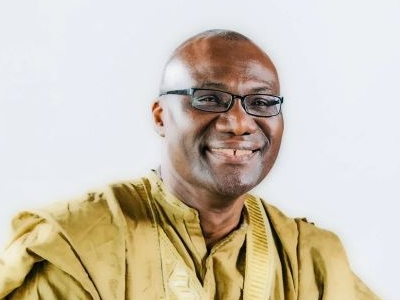 One winter week, Gary Martin found three bathroom vents in peoples’ houses that all directed warm, moist air into their attics, compromising insulation and causing ice dams on their roofs.
One winter week, Gary Martin found three bathroom vents in peoples’ houses that all directed warm, moist air into their attics, compromising insulation and causing ice dams on their roofs.
This was the last straw for Martin, who was already discouraged from witnessing numerous similar problems during 15 years as a residential contractor.
He decided to return to university to examine unsustainable practices in the housing industry. In 2008, he came to Carleton to pursue his PhD in Geography.
At first, he focused on green building. But as he read about urban sustainability debates in general, he changed his focus to suburban development in Ottawa.
“I began to understand that there was a large gap between what the urban planning literature (and Ottawa’s policymakers) claimed needed to happen with regards to green building, suburban housing and greenhouse gasses, and what the development industry claimed they were prepared to do about the same challenges,” says Martin.
For his thesis, Martin decided to study this perceived gap. “There is sometimes antagonism between public and private interests – between government and the development industry – and it interferes with productive dialogue,” notes Martin. “Agreement about terms and a common understanding about green building and sustainability would improve the prospects for long-term sustainability planning.”
Four years later, Martin has completed his thesis and says he now has a much more detailed understanding of the challenges of greening residential development. “I hope to use this understanding to advocate for more durable urban planning and residential development practices.”
He is now summarizing his findings for the people he interviewed. “I chose to study environmental leaders in industry and at the City. They are already sympathetic to my research and aware of urban planning debates around environmental issues ,” shares Martin. “I hope to give them a broader perspective on what they do from day to day, and to stimulate conversation between them.”
“I am also hoping both state and private actors, especially municipal officials and building industry policymakers in the nation’s capital, will come to acknowledge that they are not using the same language when talking about “urban sustainability”,” says Martin. “If they can agree on some basic concepts, they will be better able to work together to cut greenhouse gas emissions and other pollutants. They will also be better able to plan for the impacts of climate change on buildings and infrastructure.”
 Professor Patricia Ballamingie, Martin’s supervisor, says: “The expertise and experience that Gary brought into his degree directly fed into the insights and analysis he generated.”
Professor Patricia Ballamingie, Martin’s supervisor, says: “The expertise and experience that Gary brought into his degree directly fed into the insights and analysis he generated.”
Martin says that Ballamingie was one of the reasons he chose to pursue his PhD in Geography at Carleton. “I was drawn to my supervisor because she is extremely well-versed in urban environmental issues, and also because she is an award-winning teacher. I had been away from academia for years. I knew that Trish’s mentorship would be crucial for my success.”
For the past eight months, Martin has been working as a Research Assistant for Ballamingie on the Social Sciences and Humanities Research Council (SSHRC)-funded Community First: Impacts of Community Engagement grant. More specifically, he acted as a community-based researcher for Sustainable Living Ottawa East (SLOE) which is envisioning deep green sustainability plans for the Oblates property redevelopment on Main St. in Old Ottawa East.
He also credits Professor Jill Wigle who “constantly demanded a high level of professionalism and provided expertise on urban planning and planning theory”. Professor Wigle enlisted Martin for contract work that fed into his dissertation. Professor Iain Wallace was another important influence – both before and after he retired – because “he invited me to study housing academically rather than emotionally, steering me towards the economic and environmental geographers who could best help me understand the contradictions in planning and building our homes.”
Martin also said that he realized that “Natalie, our graduate administrator, played a huge role in my re-entry to academia, keeping me and my paperwork sorted out. And the geography department as a whole was a comfortable fit from the start.”
“It’s been a long journey for me from a moment of profound irritation about improper bathroom venting to why we plan cities as we do,” shares Martin, but a journey he is glad he has taken. “I now feel much more informed and able to work towards making our homes fit better into the global environment.”





